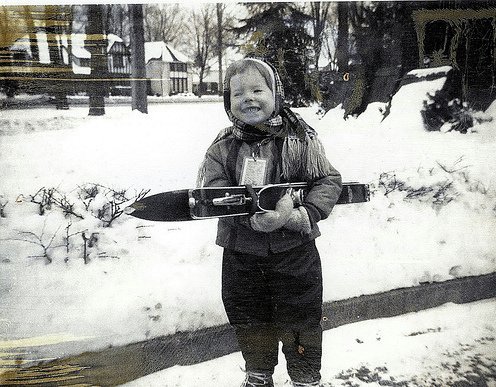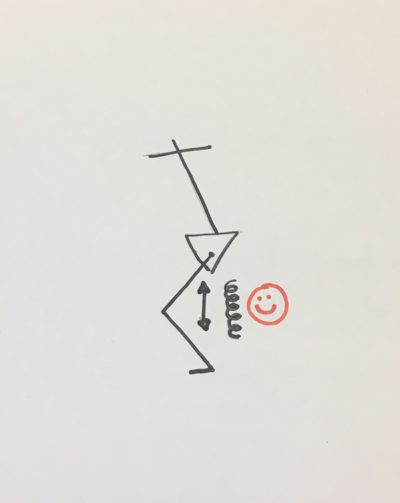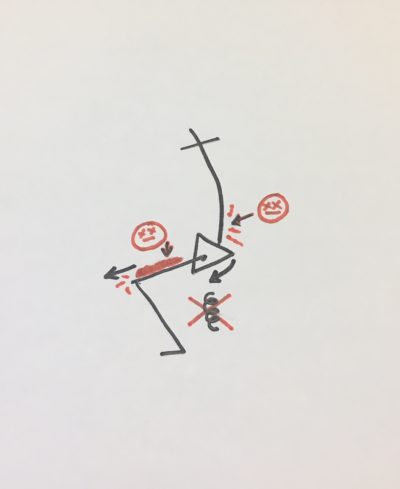Skiing and Your Knees:
A Pre-Season Primer
 I don’t know about you, but as soon as the leaves start to turn colour, I start to dream about skiing. When the first dusting of snow appears on the Lions, my heart beats a little faster. I like to ski fast and hard. I imagine the feel of the wind rushing past my face, carving turns down a long steep slope. I know I’m not alone! At about this same time of year, I begin to hear questions about the best ways to get in shape for ski season, and how to ski without knee pain. So here it is, Skiing and Your Knees: A Pre-Season Primer!
I don’t know about you, but as soon as the leaves start to turn colour, I start to dream about skiing. When the first dusting of snow appears on the Lions, my heart beats a little faster. I like to ski fast and hard. I imagine the feel of the wind rushing past my face, carving turns down a long steep slope. I know I’m not alone! At about this same time of year, I begin to hear questions about the best ways to get in shape for ski season, and how to ski without knee pain. So here it is, Skiing and Your Knees: A Pre-Season Primer!
Downhill skiing requires some strength. But it also requires stamina, agility and the freedom to shift and change between rapidly changing loads. It’s wise to spend some time preparing your whole body for the demands of the mountain. Now is the best time to start! Here are some thoughts for making the most of your pre-season sweat sesh.
If you’re dreaming about some serious vertical this winter, don’t be seduced by the quad heavy workouts! Strong thighs are an important part of the story, no question. But if you’re focusing primarily on building strength and stamina in the quads, you’re missing out on some serious power building, agility and injury prevention opportunities.
 The knees are often like the canary in a coal mine. When they’re feeling stress and pain, there is a strong likelihood that some other part of you isn’t doing its job. So instead of throwing all everything you’ve got at the quads, work to balance your strength and stability instead. Your knees will thank you!!
The knees are often like the canary in a coal mine. When they’re feeling stress and pain, there is a strong likelihood that some other part of you isn’t doing its job. So instead of throwing all everything you’ve got at the quads, work to balance your strength and stability instead. Your knees will thank you!!
Knees are funny things. They’re mobile, and stable, and they’re tough, but they can be very delicate too. They are vulnerable to the kind of shearing forces that skiing can create. When they are not supported in a balanced way, and when the joints around them are not functioning optimally, things can go south in unexpected ways.
Let’s think about basic biomechanics. When the pelvis is positioned vertically on top of the thigh bones, and the muscles in the legs and pelvis are well balanced around the joints, there can be a wonderfully buoyant interplay between the pelvis and the feet. It creates a spring-like feeling in the body, where the knees flex and extend with ease, even under variable loading at different intensities.
 But if the pelvis is tucked a little, or if the butt is grippy, then the overall movement pattern deteriorates. With the pelvis slightly tucked, the low back is a little stretched, and deep support becomes a little more challenging. Over time, the low back may get a little grouchy. The easy flow disappears as the loads moving through the legs travel forward into the front of knee, instead of up and down between pelvis and feet. The quads end up working way harder than they need to!
But if the pelvis is tucked a little, or if the butt is grippy, then the overall movement pattern deteriorates. With the pelvis slightly tucked, the low back is a little stretched, and deep support becomes a little more challenging. Over time, the low back may get a little grouchy. The easy flow disappears as the loads moving through the legs travel forward into the front of knee, instead of up and down between pelvis and feet. The quads end up working way harder than they need to!
How do you prepare for fluid movement in your knees and legs?
You TRAIN for it!
- Untuck the Butt
At the beginning of your workout, take a few minutes to sit on a 5″ ball between the sitz bones. Take a few breaths, feeling the sitz bones spread apart around the ball as you breathe. A more neutral pelvis makes life a lot easier for your knees. - Integrate Your Core
Strong core muscles do not necessarily create the stability you need. Learn to activate your deep system effectively, and in response to the load demands that skiing provides. Strong, resilient support is what you need. - Develop Balanced Leg Strength
Uptrain strength and stamina in your quads, hamstrings, and gluteal muscles. Make sure you have some length in your inner thighs, with free movement in the ankles and knees. - Check Your Posture
Slouching, bad shoulder mechanics, a twisted thorax – all kinds of things can create faulty load transfer patterns that affect the function of the pelvis and legs. Clean that stuff up as you work! Learn where your body needs better support for more freedom in your movement overall! - Remember Your Upper Body Work
Make sure you’re preparing yourself as a whole athlete! A strong resilient body is balanced and integrated. Don’t forget to train your upper body too!
What are your biggest challenges as your get ready for ski season? Share a few words in the comments below! If you’re ready to explore the benefits of integrated whole body work to prepare you for the slopes this year, book a private appointment with us. We can help you on your best path to happy, pain-free knees and fabulous, fluid skiing.
Let it snow!!
If you’d like more information about Moving Spirit’s Pilates and Integrated Movement Programs, check out our Getting Started Guide, or book an Introductory Private Training Package today.
About Susannah Steers

Susannah is a Pilates and Integrated Movement Specialist, and owner of Moving Spirit. Through movement teaching, speaking, and facilitating workshops, she supports people in creating movement practices that promote fitness from the inside out. Susannah co-hosts The Small Conversations Podcast; an interview-style podcast dedicated to promoting conversations about health that can spark positive change in individuals, families, communities and across the globe.
